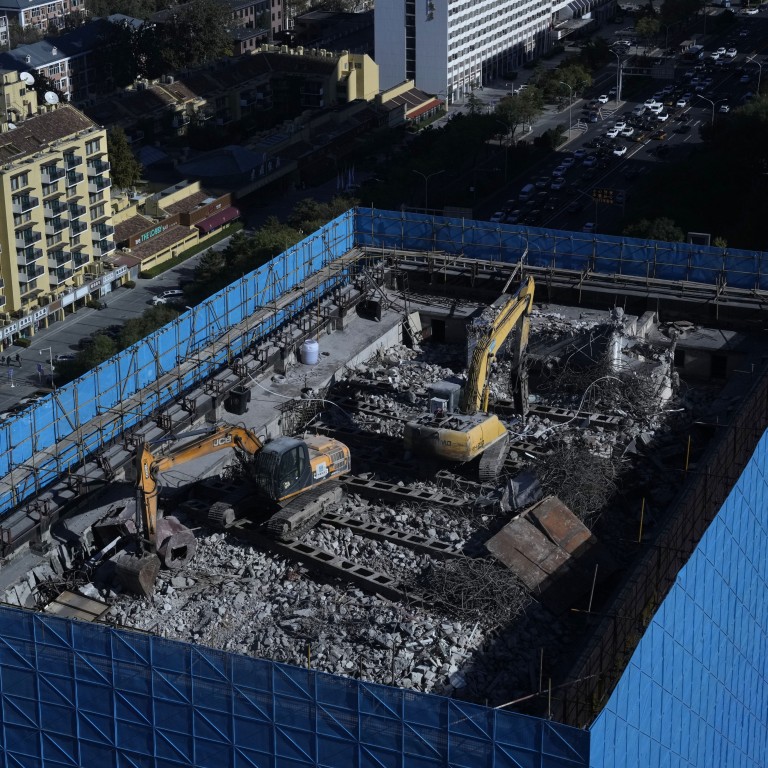
Explainer | China’s economic recovery ‘slowly moving in a positive direction’: 7 takeaways from October’s data
- China’s retail sales rose by 7.6 per cent in October, year on year, but real estate investment fell by 9.3 per cent in the first 10 months of the year
- Fixed-asset investment expanded by 2.9 per cent in the first 10 months of the year, while industrial output rose by 4.6 per cent in October
1. Retail sales ‘particularly strong’, but scepticism remains
“The October activity data showed an ongoing recovery which was led by consumption,” said analysts at HSBC.
Analysts at Capital Economics pointed to a low base for comparison as many cities in China went into lockdown a year ago, although they said the recovery in sales continued to gain momentum, reflecting an improvement in consumer confidence.
The breakdown showed that the gains were concentrated in online goods purchases, they added.
“Retail sales in October was particularly strong, beating even our above-consensus estimates given sharp increases in holiday-related spending components including catering, tobacco and alcohol, sports and entertainment, and communication equipment,” Louise Loo, lead economist at Oxford Economics.
China’s economic recovery uneven as property downturn goes on, retail sales rise
Loo added that the momentum may persist going into the first quarter of next year, but she remained sceptical of a permanent upshift in consumer spending despite three consecutive months of strong retail sales data.
2. Property drag here to stay
Real estate investment missed expectations and fell by 9.3 per cent in the first 10 months of the year compared with a year earlier, contracting further from the 9.1 per cent drop in the first three quarters.
Analysts at Capital Economics said that “tentative signs of improvement in the property sector appear to have fizzled out”.
“The drag from the property sector intensified – with the weakness in the sector here to stay at least through 2024,” added Loo at Oxford Economics.
3. Fixed-asset investment growth hits 23-month low
Fixed-asset investment expanded by 2.9 per cent in the first 10 months of the year, compared with the same period last year, but was down from the 3.1 growth per cent in the first nine months of the year.
The reading also fell to a 23-month low, with Capital Economics suggesting a slowdown in monthly year-on-year growth from 2.5 to 1.4 per cent.
“Manufacturing and infrastructure investment accelerated, and the contraction in property investment eased. But these were more than offset by slower spending in other sectors,” they said.
4. ‘Industrial output remained resilient’
Industrial output rose by 4.6 per cent in October, up from 4.5 per cent growth in September.
Fading destocking pressures likely contributed to an uptick in manufacturing activity, said Loo at Oxford Economics.
Export growth sluggish amid soft demand: 4 takeaways from China’s trade data
Electric vehicles, batteries and renewables grew at double digit pace, year on year, according to Loo, while pharmaceutical manufacturing, iron and steel manufacturing were among the sectors seeing annual declines.
5. Surveyed urban jobless rate unchanged
The overall surveyed urban jobless rate stood at 5 per cent in October, unchanged from September.
6. Liquidity injections spring positive surprise
Before the release of the data, the People’s Bank of China boosted liquidity injections but kept the interest rate unchanged when rolling over maturing medium-term policy loans.
With 850 billion yuan (US$117 billion) worth of medium-term lending facility loans set to expire, the operation resulted in a net 600 billion yuan fund injection into the banking system.
Ahead of the monthly deluge of activity data, the PBOC already provided markets with a positive surprise
The central bank also injected 495 billion yuan through seven-day reverse repos.
“Ahead of the monthly deluge of activity data, the PBOC already provided markets with a positive surprise,” added Carnell at ING.
7. More support needed to help the ‘economy from backsliding’?
Yue Su, principal economist for China at The Economist Intelligence Unit, said October’s data confirmed that China’s economy continues to steadily recover, propelled by government-driven investment, a gradual stabilisation of external demand, and sustained improvements in consumption.
“Taking all of the data together, the general sense is that things are moving slowly in a more positive direction, but that the economy still needs the liquidity support that the PBOC seems to be starting to provide, and the slightly more helpful fiscal stance that the central government is taking,” said Carnell at ING.
And Carnell expects the struggles in the property sector to continue for a “considerable time”.
It was not nearly as weak as some had feared
“While the recovery is ongoing and being led by consumption, the renewed weakness in the property sector and ongoing softness in global demand will keep policymakers on their toes,” said analysts at HSBC.
Capital Economics expects a modest reacceleration in growth over the coming months, with policy support set to remain, and even possibly be “stepped up to prevent the economy from backsliding”.
“Overall, the data suggests that the recovery was struggling to gain a strong footing at the start of the fourth quarter, but it was not nearly as weak as some had feared,” they added.

.JPG?itok=J8tgfPmW&v=1659948715)